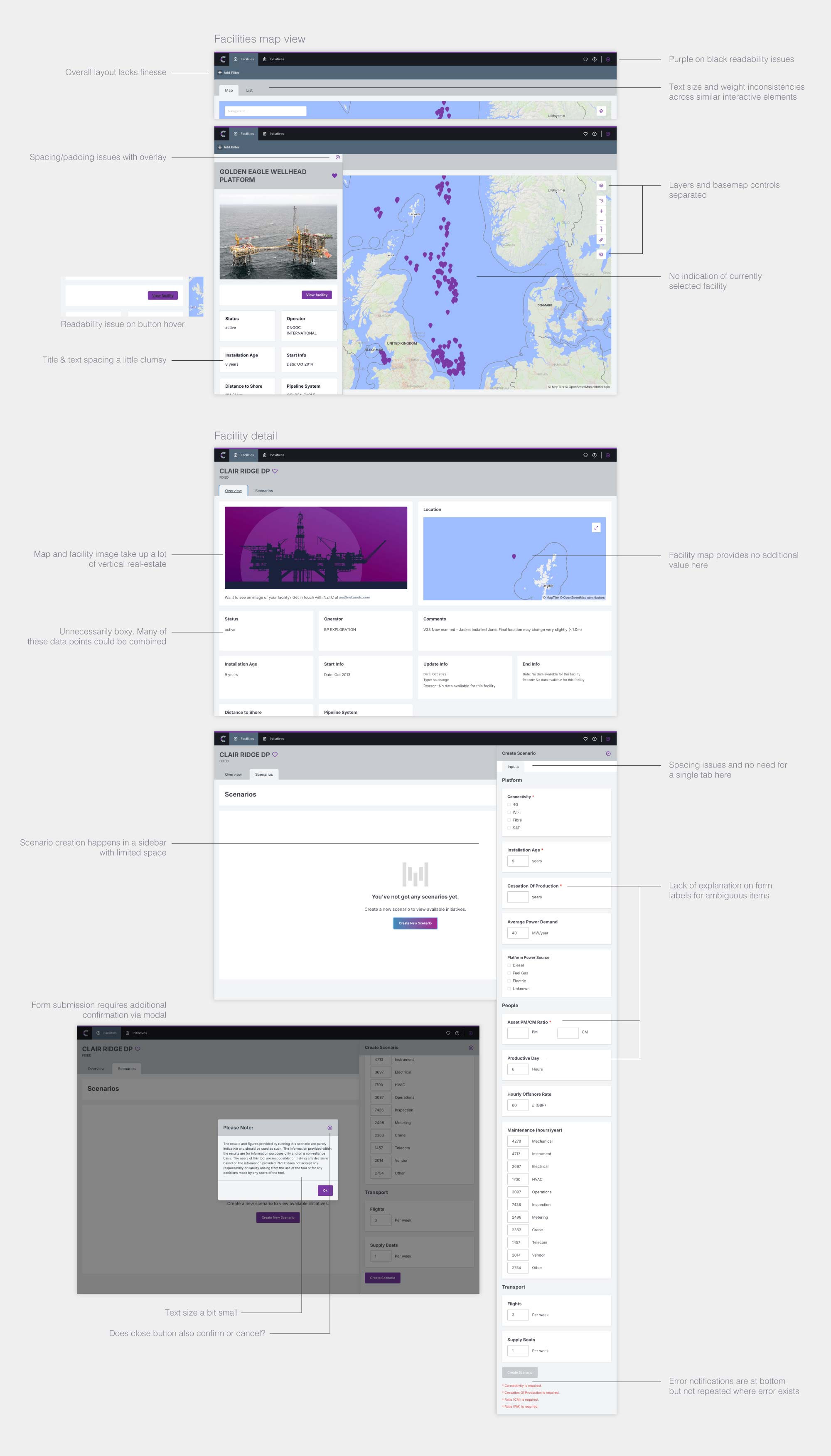
The Net Zero Technology Company (NZTC), is a not-for-profit organisation and their mission is to work with industry, government and academia, driving technology innovation to accelerate the energy transition to net zero.
One of seven projects being delivered through the Net Zero Technology Centre’s Net Zero Technology Transition Programme (NZTTP), Advancing Remote Operations (ARO) was a “lighthouse project” that was designed to equip and inspire the energy industry with the knowledge, know-how and technology solutions needed to accelerate wide-scale adoption of remote operations.
The challenge was how to predict the impact of remote offshore operations, before implementation, to best understand where to allocate funding or resources. In addition, the data that drives these predictions comes from multiple sources and suppliers, in varying formats, so would need to be collected, merged and implemented into a single solution.
For Phase 1, Brainnwave assisted NZTC in developing a cloud based Asset Evaluation Toolset to help operators identify, evaluate, and quantify remote operations opportunities for their UKCS assets.
The collaboration with Brainnwave has been instrumental in equipping us with the tools needed to drive the adoption of remote operations within the energy sector. This project has not only provided immediate operational benefits but also sets a strong foundation for future advancements in the industry
In late 2024, NZTC asked Brainnwave to put together a project plan for phase 2 of this project.
The relevant aims for phase 2 (certainly as far as my input was concerned) were to improve the usability and look & feel of the platform, conceptualise potential improvements from workshops with stakeholders and discuss new features with a product consultant in order to help put together a specification for the next phase of work.
The existing platform had a number of shortcomings. Largely due to the fact that it was developed as a pilot project or Phase 1 style MVP (Minimum Viable Product) with the intention of iterating over time.
User interviews had told us that it didn’t feel quite right visually, and there were lots of areas for improvement.
Firstly the overall layout, facility view and scenario creation needed work...

Once a scenario had been created with a facility, there was still lots of areas needing attention...
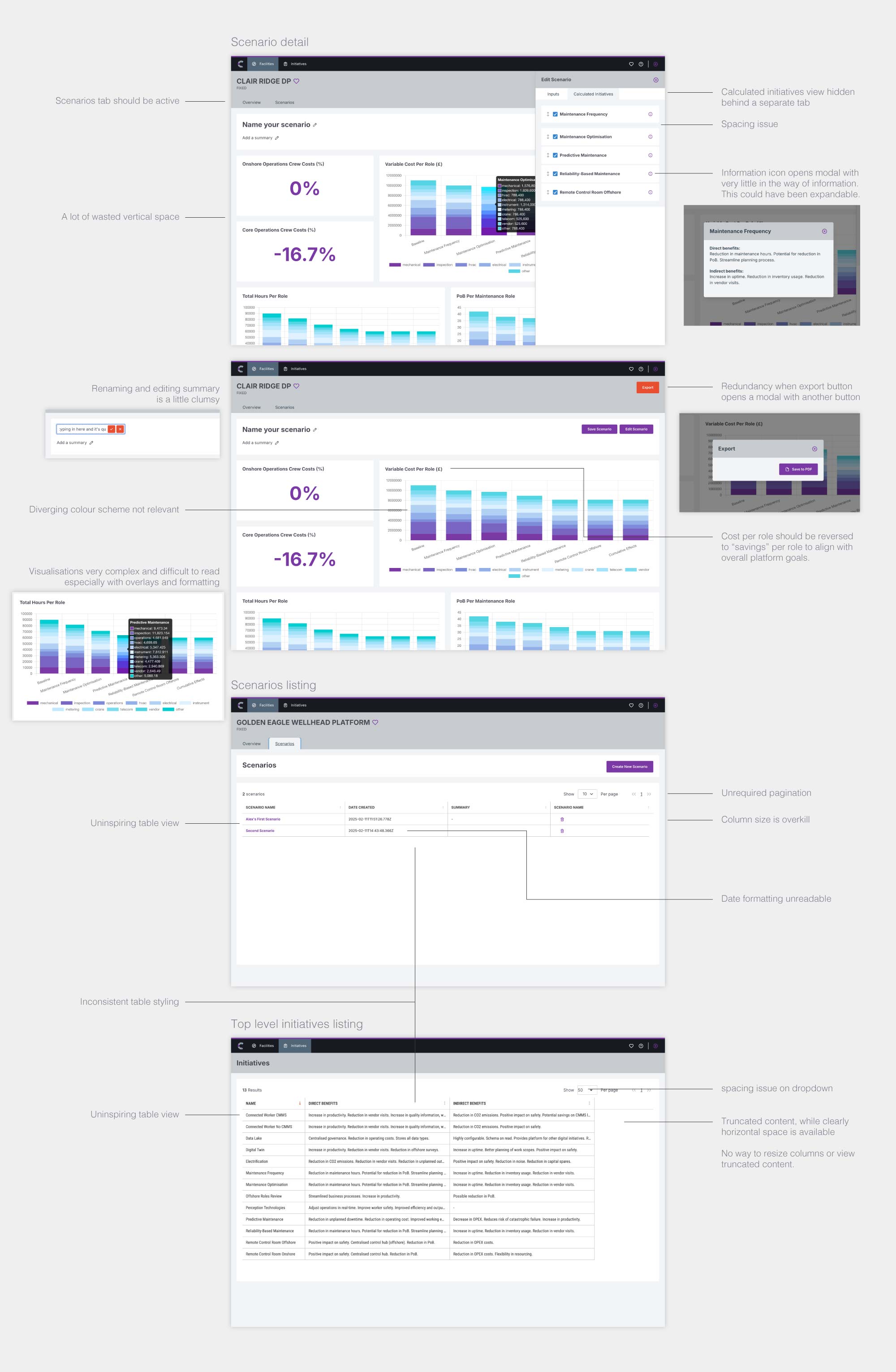
A product consultant had put together a spreadsheet with each line-item being an issue or feature needing addressed. Items were as far ranging as general changes like “improve overall look and feel” to specific changes like “form field addition in scenario creation process”.
I worked through each of the line items, and addressed them with a suite of new designs in Figma.
Any implied structural change was given context, and any elements where an expandable section was present was designed both open and closed.
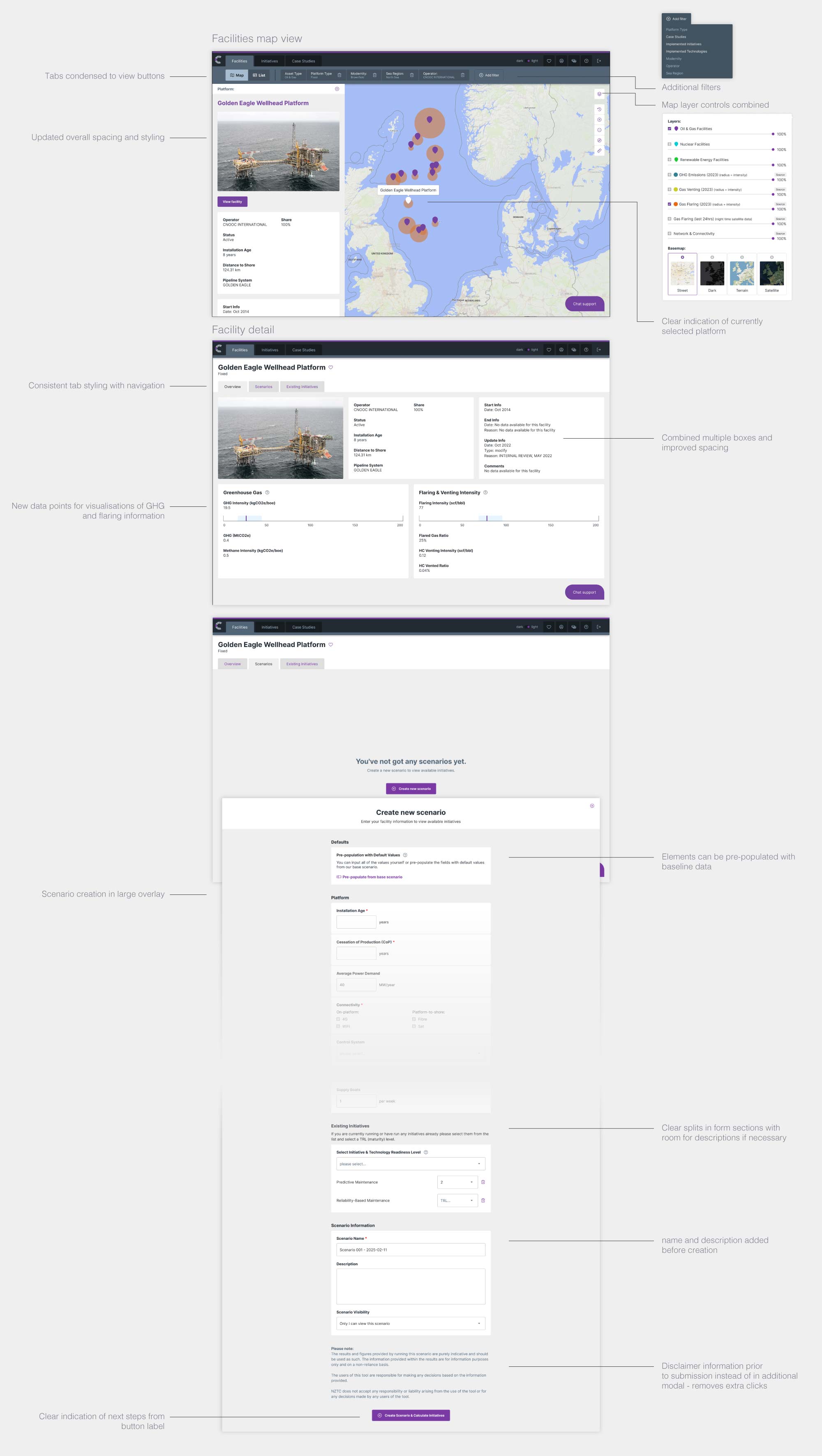
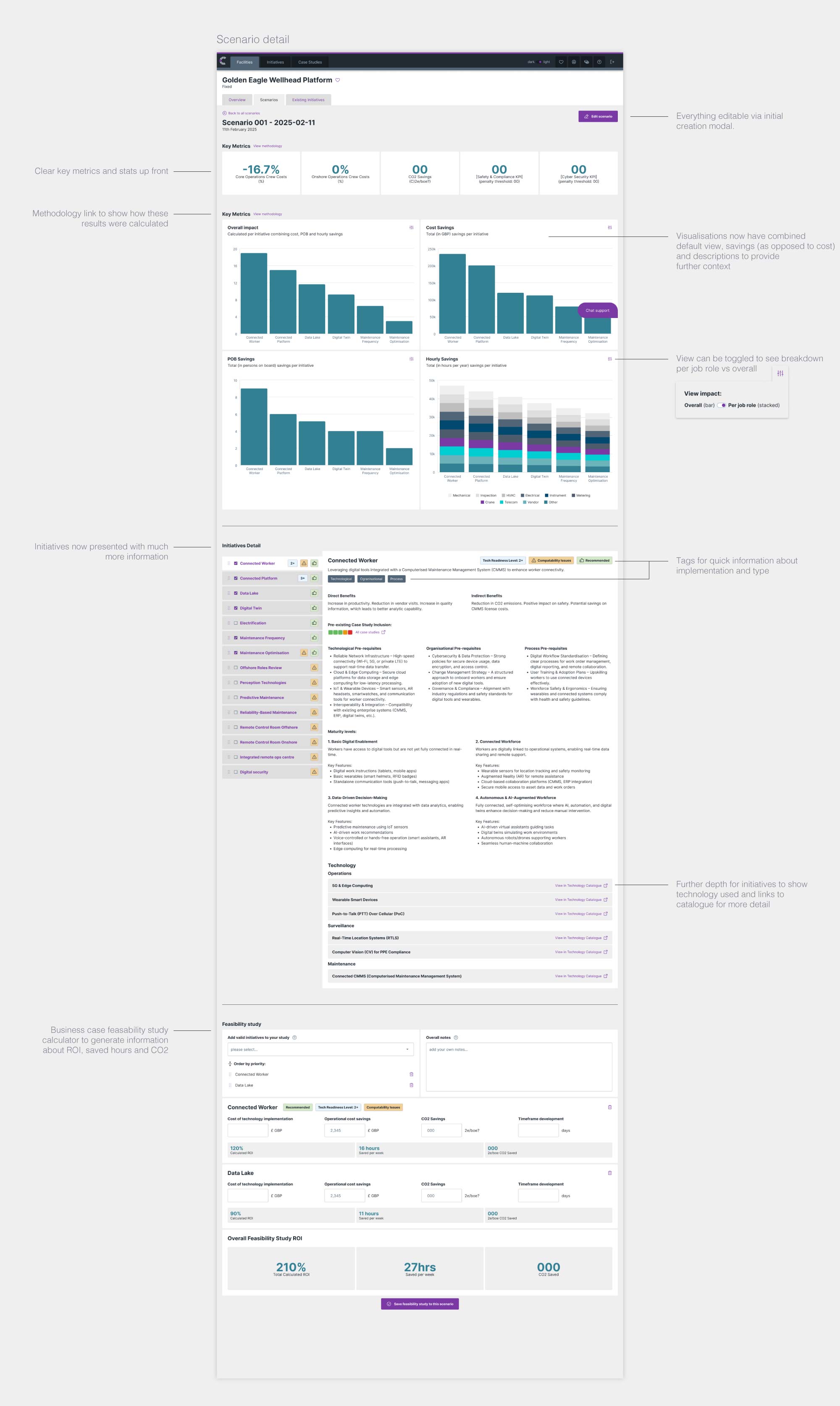

Our deliverables at this stage were supporting design work and a roadmap with all potential improvements that the client could select from for the next phase of work.
This phase 2 proposal document, supporting designs and project plan were our deliverables. Should they be deemed something the client wishes to continue with (and should the project be extended), then detailed spec sheets, design documents and all relevant components would be created for the development teams.
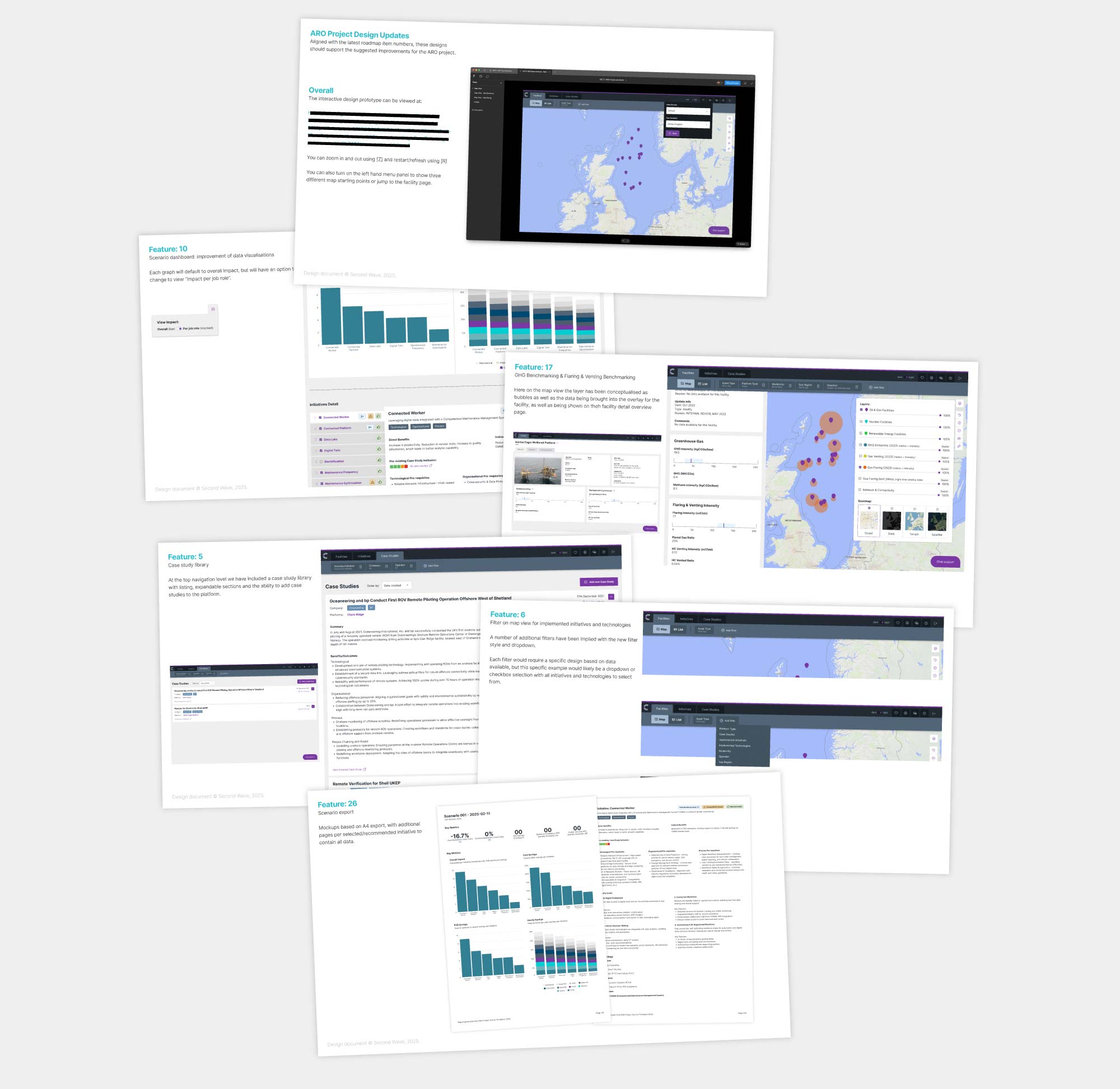
This piece of work is currently ongoing.